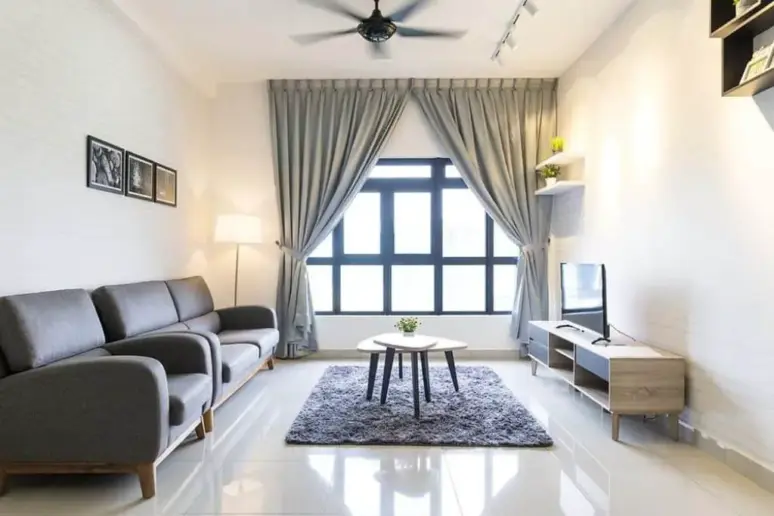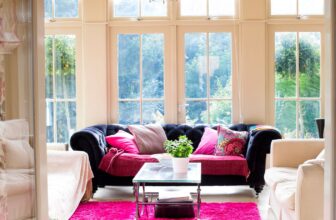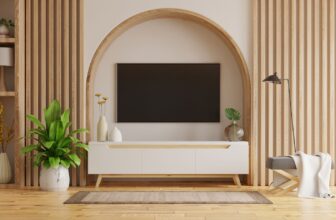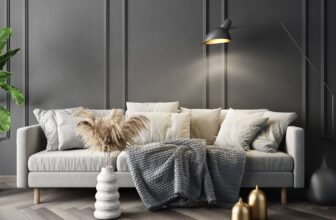What Color Rug For Living Room? (And Should It Be Lighter Or Darker?)
The feel and looks of the room are determined by various interior design elements.
Each of them adds a unique touch and plays the role in defining the ambiance of the living space.
However, no decor element compares to a rug when it comes to easily and fundamentally transforming the environment we live in.
This is especially true for the living room where we spend most of our time while at home. A particular size, pattern, texture, or color of the rug can instantly refresh the room.
They can make it more exciting or tone it down and create a more relaxing atmosphere.
As something that binds together all interior elements, choosing the right rug is crucial to the whole area you’re decorating.
It all starts with the color.
Knowing which color is the perfect choice for a living room rug will help set the tone for the entire room.
What Color Rug For Living Room?

When choosing the color of the rug, the most important thing is that it complements and matches nicely with other colors in the living room.
You can achieve this in two ways.
One way is first settling on the rug’s color and then designing the space around it.
Or, if you already have furniture, curtains, and painted walls in place, find the rug whose color will work with the existing items.
Contrasting the style or color of the rug to the other elements usually works pretty well.
Still, you should feel free to experiment until you find the combinations that suit you best.
Matching The Rug Color To Other Elements In The Living Room
There are a couple of things you should pay attention to in order to maintain the perfect interior balance in your living room.
If the central piece of furniture, such as a sofa, features a solid color, then the rug should be patterned.
The best thing to do is to have the secondary color of the rug match the primary sofa color.
Then, have the third color match other colors in the room.
It also works the other way around. A patterned sofa or another large piece of furniture goes well with a single-colored rug.
The same goes for walls or drapes.
Window coverings or walls featuring diverse color patterns will require non-patterned rugs or ones with a very understated design.
Remember that the rug anchors the room in the aesthetic sense. So. its color and style will set the overall mood in the surroundings.
Different colors will provide a different overall feeling to the room and make it look more expanse or more intimate.
Neutral Rug Colors
Picking the rug in neutral tones is probably the safest choice as it will work well with almost any space.
The exact neutral shade you may choose will depend on the walls and flooring tones as the rug should complement and accentuate them.
It may add a bit of color to an all-white room or lighten up the darker space.
This is especially the case in the living rooms that already feature a lot of color, texture, and diverse patterns.
Also, having a rug in a neutral color will allow the focus to shift to whatever you want to be the center of attention in the room.
This may be a framed picture on the wall, a particularly appealing piece of furniture, or, perhaps, a chandelier.
A subtle rug design will not overpower the room and will allow all the interior design elements to shine in their full glory.
More Intensive Rug Colors
Depending on how the rest of the space looks, a more bold choice when it comes to a rug color for the living room can also work.
If nothing else, it will allow you to make a statement, better express yourself, and select the design that better matches your personality.
In general, intensive rug coloring is best used when the central pieces of furniture in the space are in natural tones and feature a simple pattern or no pattern at all.
This shifts the attention to the rug making it the focal point of the living room.
In addition, while it should contrast the biggest items in the room it’s a good idea to match the rug with smaller elements of the interior design.
Having the rug in the same or similar tone as the curtains or cushions will allow it to perfectly tie the whole room together.
How To Use Rug Color To Make The Living Room Seem Bigger Or Smaller

If you have a living room that’s a bit on the smaller side, you can use certain rug colors to make it seem bigger and more luxurious.
On the other hand, when the living room is too big, the rug can help provide the feeling of intimacy and make it more cozy.
In the smaller rooms, choosing the light-colored rugs will create the illusion of a more vast space.
The light tones that can create this effect include beige, tan, sand, or taupe.
They will make the floor seemingly more expanse and smooth and won’t distract the eye.
The space will not only seem bigger but will also be much brighter and open.
An open-floor room, with more square footage, often feels too empty and cold. Using rugs with more dark-colored tones can make it look warmer and more intimate.
This will make the rug a focal point of the room and makes the space feel less sprawling.
Conclusion
Even though many people don’t give much thought to them, rugs can make or break the living room.
They tie the room together, define spaces, and greatly influence how we feel when in the room.
If the space feels too cold and impersonal, the rug of the right color can add some warmth and a touch of flair and excitement.
They can also help settle down and even out rooms with a bunch of different design items that usually feel overcrowded.
Furthermore, with rug colors, we can every so often freshen up the room and completely change the overall feel of the living space.



















































































